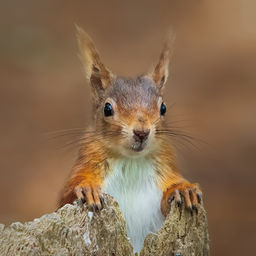
Statement of Intent: The Primary Colours of Nature
Green, tan and blue. From my perspective, these are the primary colours of nature, as they are the dominate hues in three principal UK habitats: the woodlands, grasslands and wetlands.
The aim of this panel is to explore how these three colours create the perfect backdrop for British animals as they go about their business during the summer months. In some cases, these colours help camouflage the animals from their predators; in others, they compliment the bold tones used by some species to attract a mate.
A key objective was to portray British wildlife its most relaxed and jubilant. This often meant photographing my subjects in the early morning hours, when they were most active and the light was flattering. The end result is a set of portraits of familiar species as they hunt, eat and play under the summer sun.
September 2021: Awarded ARPS


In September 2021 I was awarded the Associate of The Royal Photographic Society (ARPS) in Natural History. The ARPS is the second highest of three RPS distinctions following the LRPS. To be awarded the distinction you have to submit 15 photographs, assembled within a theme to a panel of genre-specialist judges.
For the Natural History genre, the images are expected to exhibit a high level of technical skill, as well as field craft, reflecting the photographer's own work and knowledge of the subject matter. Manipulation that significantly alters the truth of an image or subject is not permitted. Photographers are also discouraged from including stereotypical images of wildlife produced at workshops or wildlife tours, although up to four workshop images can be included.
The panel should be submitted within a hanging plan along with a 150 word Statement of Intent. My theme was 'The Primary Colours of Nature' chosen as a result of an increased interest UK wildlife that developed over the period of lockdown. In particular, I was interested in the role colour played in supporting animals' ability to survive in the forest and meadow. Hence, my panel was as much a visual exploration of these natural habitats as it was of the wildlife within them.
During lockdown, Assessment Days were offered as 1-2-1 sessions provided over Zoom. This session was instrumental in helping me understand the requirements of the ARPS distinction and select images that best reflected my intended theme.
ARPS panels can be submitted as a series of prints or projected digital images. I chose to submit my panel as prints, but this created challenges associated with post-Covid social distancing guidance. This guidance meant that images could not be judged in person (as print panels were traditionally done) but via zoom, while the judges looked at the PDIs on a their personally calibrated home screens. A print specialist then verified that the images were printed to a standard consistent with the ARPS distinction.
This was a bit of a harrowing experience for me, as some of the judges questioned whether there were 'mistakes' in the printed version. I was therefore relieved when the print expert assessed them to be 'well executed' and to a 'standard consistent with' an ARPS distinction.
In the end, my panel was accepted and I was very pleased when it was featured in the November issue of the Iris. The Iris is the RPS' Natural History groups bi-annual magazine. More information can be viewed on the online version on the RPS website:














